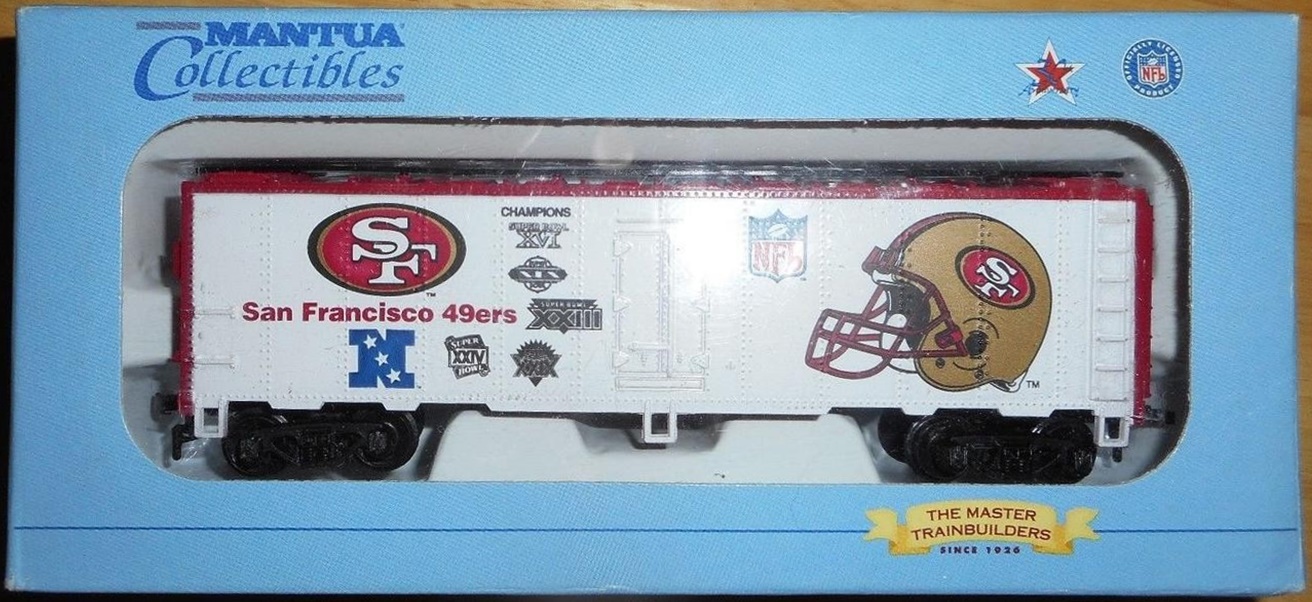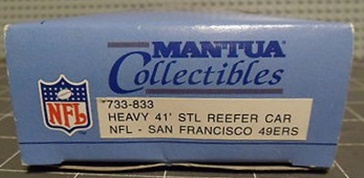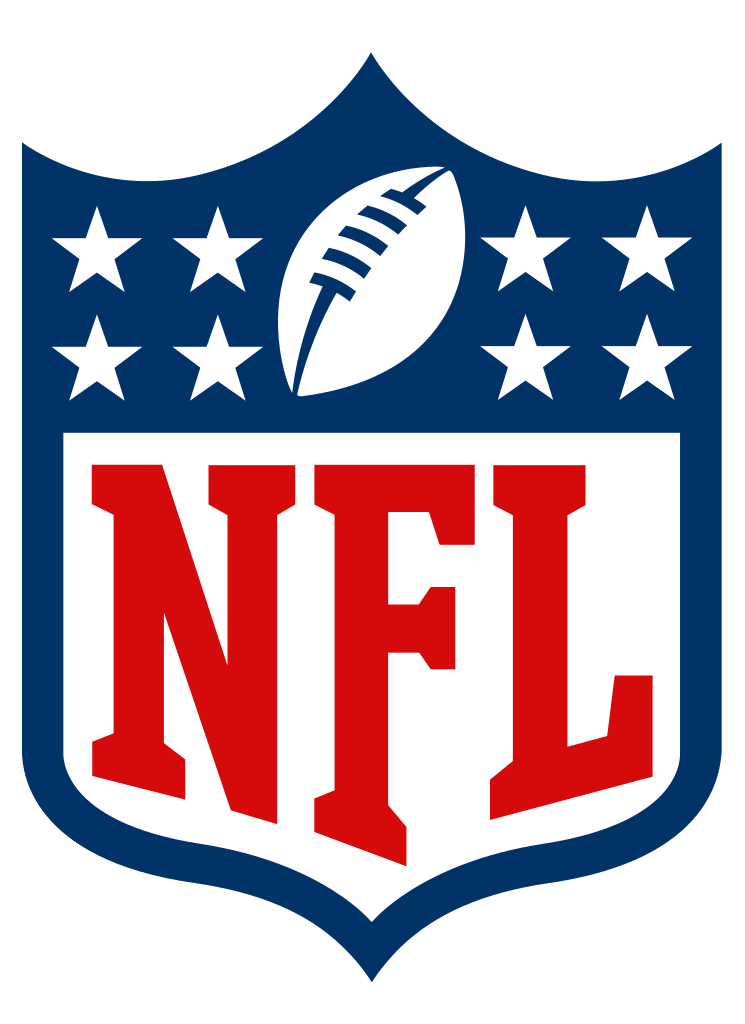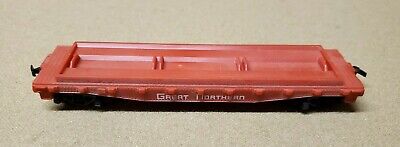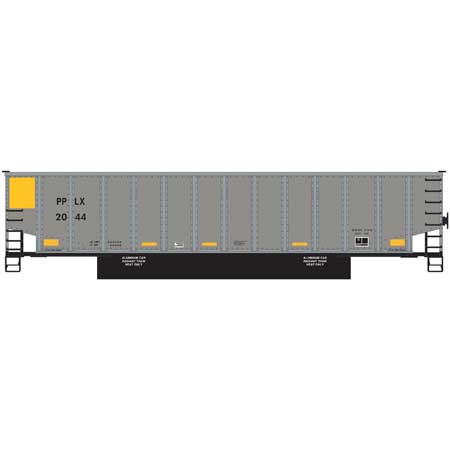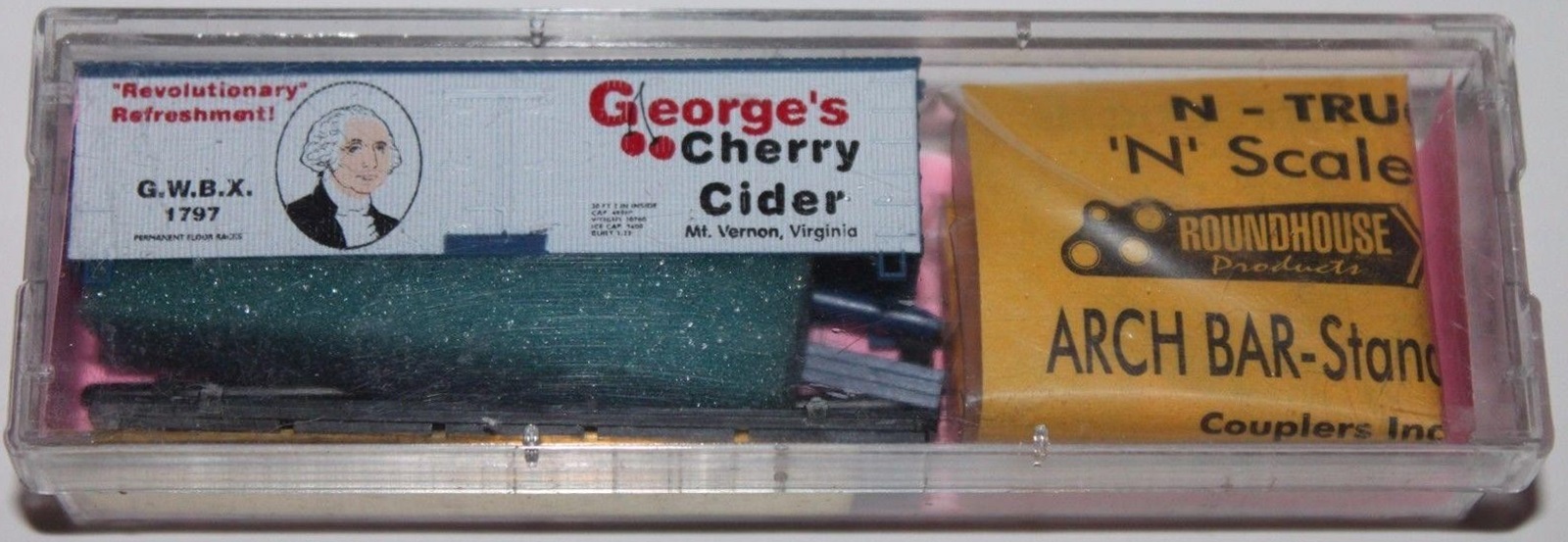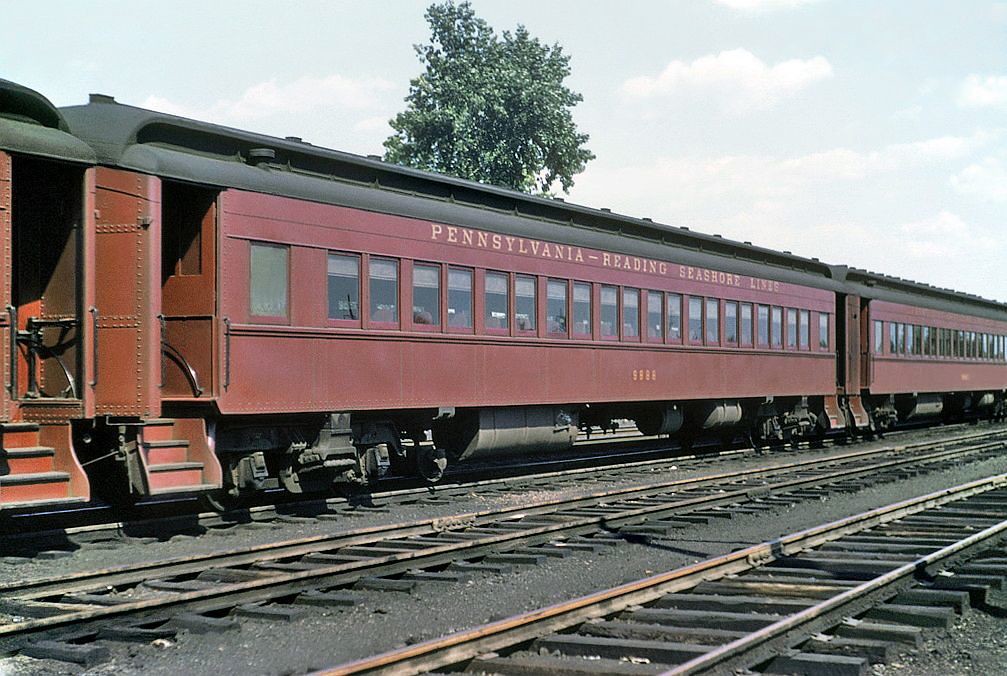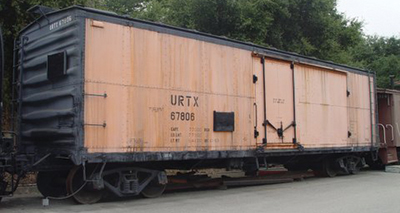General Information About Item: Also exists in Gold (stock number 733-091)
Prototype Information: A refrigerator car (or “reefer”) is a refrigerated boxcar (US) or van (UIC), a piece of railroad rolling stock designed to carry perishable freight at specific temperatures. Refrigerator cars differ from simple insulated boxcars and ventilated boxcars (commonly used for transporting fruit), neither of which are fitted with cooling apparatus. Reefers can be ice-cooled, come equipped with any one of a variety of mechanical refrigeration systems, or utilize carbon dioxide (either as dry ice, or in liquid form) as a cooling agent. Milk cars (and other types of “express” reefers) may or may not include a cooling system, but are equipped with high-speed trucks and other modifications that allow them to travel with passenger trains.
By the 1940's, new reefers were being built entirely of steel. Insulating techniques improved to the point where economical refrigeration could be accomplished using steel side plates in place of wood sheathing. Cars with steel roofs and sides were more durable and required fewer repairs.
The General American Transportation Corporation built several 40' steel reefer for the Union Refrigerator Transit Line (URTX) from the late 1940's into the 1950's.
This reefer was 40' long & weighted 61,500 lbs. The car is a steel bodied reefer with iced bunkers at each end. These ice bunkers hold 10,400 lbs. of chunk ice or 11,500 lbs. of crushed ice. Ice stations were located every 100-150 miles along the railroads main line to replace the melted ice. In the winter, charcoal heaters could be placed in the bunkers to keep the cargo from freezing. Fans are located in the floor at each end to circulate air and keep an even temperature throughout the car. Typical cargo would be fresh fruit, vegetables or eggs.
American Car & Foundry (ACF Industries) also built 40' reefer for several companies.
By the 1940's, new reefers were being built entirely of steel. Insulating techniques improved to the point where economical refrigeration could be accomplished using steel side plates in place of wood sheathing. Cars with steel roofs and sides were more durable and required fewer repairs.
The General American Transportation Corporation built several 40' steel reefer for the Union Refrigerator Transit Line (URTX) from the late 1940's into the 1950's.
This reefer was 40' long & weighted 61,500 lbs. The car is a steel bodied reefer with iced bunkers at each end. These ice bunkers hold 10,400 lbs. of chunk ice or 11,500 lbs. of crushed ice. Ice stations were located every 100-150 miles along the railroads main line to replace the melted ice. In the winter, charcoal heaters could be placed in the bunkers to keep the cargo from freezing. Fans are located in the floor at each end to circulate air and keep an even temperature throughout the car. Typical cargo would be fresh fruit, vegetables or eggs.
American Car & Foundry (ACF Industries) also built 40' reefer for several companies.
Road/Company Information: The National Football League (NFL) is a professional American football league that consists of 32 teams, divided equally between the American Football Conference (AFC) and the National Football Conference (NFC). The NFL is one of the major North American professional sports leagues and the highest professional level of American football in the world. Each NFL season begins with a three-week preseason in August, followed by the 18-week regular season which runs from early September to early January, with each team playing 17 games and having one bye week. Following the conclusion of the regular season, seven teams from each conference (four division winners and three wild card teams) advance to the playoffs, a single-elimination tournament that culminates in the Super Bowl, which is contested in February and is played between the AFC and NFC conference champions. The league is headquartered in New York City.
The NFL was formed in 1920 as the American Professional Football Association (APFA) before renaming itself the National Football League for the 1922 season. After initially determining champions through end-of-season standings, a playoff system was implemented in 1933 that culminated with the NFL Championship Game until 1966. Following an agreement to merge the NFL with the rival American Football League (AFL), the Super Bowl was first held in 1967 to determine a champion between the best teams from the two leagues and has remained as the final game of each NFL season since the merger was completed in 1970.
The NFL was formed in 1920 as the American Professional Football Association (APFA) before renaming itself the National Football League for the 1922 season. After initially determining champions through end-of-season standings, a playoff system was implemented in 1933 that culminated with the NFL Championship Game until 1966. Following an agreement to merge the NFL with the rival American Football League (AFL), the Super Bowl was first held in 1967 to determine a champion between the best teams from the two leagues and has remained as the final game of each NFL season since the merger was completed in 1970.
Brand/Importer Information: John Tyler founded the original Mantua Toy & Metal Products Company in 1926 with other members of his family, selling trains under the Mantua name by 1930. The shift towards “ready-to-run” (RTR) train sets in the postwar era led to the creation of the Tyler Manufacturing Company in 1952, better known as TYCO. Mantua continued to exist throughout the ’50s and into the 1960s manufacturing kits, while the TYCO line sold already built and ready to operate model trains largely in set form. The Mantua and TYCO empire was a family owned business from its inception. John Tyler’s son, Norman Tyler, was named president of TYCO Industries, Inc. the combined Mantua and TYCO companies, in 1967.
The company was eventually sold to Consolidated Foods, with Norman Tyler remaining on the board. Production was moved to Hong Kong, and the original Woodbury Heights factory was deemed redundant. The Mantua name was re-introduced in 1977 when Tyler purchased the factory in and continued as an independent company releasing HO-scale trains until 2002.
Mantua offered steam locomotive kits, plus ready to run examples. Freight car offerings included classic Mantua tooling, plus later the former Lindberg Line tooling was re-introduced by the company. The final production year for Mantua was 2001. “Mantua Classics” continues today as part of the Model Power line, which is distributed by Model Rectifier Corp. (MRC).
The company was eventually sold to Consolidated Foods, with Norman Tyler remaining on the board. Production was moved to Hong Kong, and the original Woodbury Heights factory was deemed redundant. The Mantua name was re-introduced in 1977 when Tyler purchased the factory in and continued as an independent company releasing HO-scale trains until 2002.
Mantua offered steam locomotive kits, plus ready to run examples. Freight car offerings included classic Mantua tooling, plus later the former Lindberg Line tooling was re-introduced by the company. The final production year for Mantua was 2001. “Mantua Classics” continues today as part of the Model Power line, which is distributed by Model Rectifier Corp. (MRC).
Item created by: luchestr on 2022-05-31 17:44:37. Last edited by Alain LM on 2022-06-01 15:02:31
If you see errors or missing data in this entry, please feel free to log in and edit it. Anyone with a Gmail account can log in instantly.
If you see errors or missing data in this entry, please feel free to log in and edit it. Anyone with a Gmail account can log in instantly.



